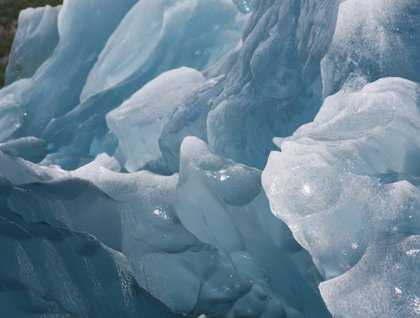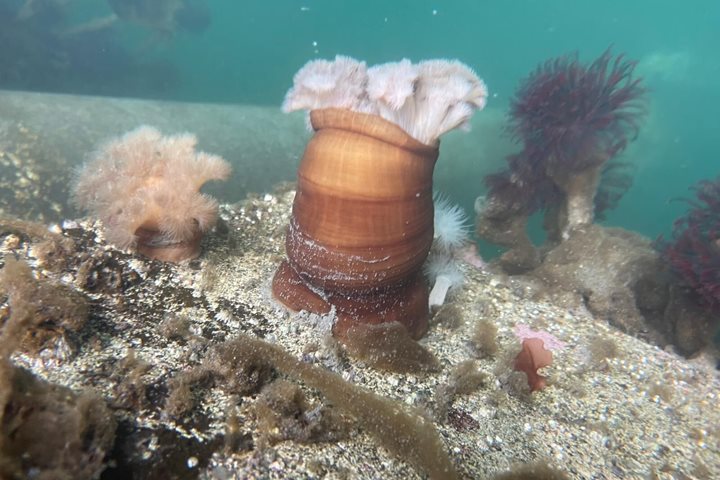Today we explored Tracy Arm, one of the most intense fjords in Southeast Alaska. Though every waterway in Southeast is glacier-carved, most are cut into accretionary rock, a mess of mostly oceanic material plastered to the continent’s edge. But in Tracy Arm, glaciers cut into granite. The result is amazing scenery, with rounded peaks rising thousands of feet almost straight up from the water.
We entered the arm early in the morning, crossing the bar that marks the glaciers’ recent greatest advance. By breakfast we were motoring through jade-green water studded by icebergs. Our intention was to approach one of Tracy Arm’s glaciers by rubber boat. This proved more challenging than expected. The arm’s end was thoroughly choked in ice. Nevertheless, we hopped into our boats and made a try. Icebergs of every sort surrounded us. Some were fist-sized, some were the size of tennis courts. They were hoary, dark and gravel-studded, or the most extraordinary glowing sapphire. They called to mind swans or castles or snowy mountain ranges.
Through much perseverance and ice-grinding, we were able to reach our goal. Sawyer Glacier rises like a glaucous cliff as much as two hundred feet high. Happily, the water near the glacier was ice-free, so we were able to get fine views. As hoped, we saw several icebergs “being born,” as the glacier calved with a thundery roar.
Later in the afternoon we anchored at William’s Cove. Though probably covered in ice a few hundred years ago, this area now supports mature forest. We met the typical plants of the Tongass National Forest. Moss and maianthemum covered the forest floor, while spruce and hemlock towered overhead. We also found evidence of the Tongass’s mammalian life as well – squirrel middens were scattered among the trees, and the trails were marked by prodigious piles of bear poo.
Southeast Alaska is carved by ice and cloaked in forest. Today’s adventures were a fine introduction to that which has made this region spectacular and unique.







